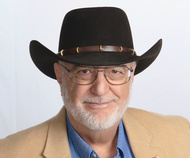
Excess Workers’ Compensation Policy is not a Workers’ Compensation Policy
Barry Zalma
Read the full article at https://lnkd.in/dqxhWcQe and https://zalma.com/blog plus more than 4200 posts.
Published on May 4, 2022
Barry Zalma, Esq., CFE
Insurance claims expert, consultant at Barry Zalma, Inc. and author/Publisher at ClaimSchool, Inc.
1,276 articles
Posted on May 4, 2022 by Barry Zalma
Neville Chemical Company (“Neville”), appealed from the District Court’s order granting summary judgment to its excess workers’ compensation insurer, TIG because of a failure to meet the self-insured-retention (SIR). In Neville Chemical Company v. TIG Insurance Company, successor-in-interest to Transamerica Insurance Company, No. 21-1616, United States Court of Appeals, Third Circuit (April 26, 2022)
FACTS
Neville, a Pittsburgh hydrocarbon resins manufacturer, maintained a self-insured workers’ compensation program. To supplement this program, Neville purchased a “Specific Excess Workers Compensation Policy” (“Policy”) from TIG. Under this Policy, after Neville provided workers’ compensation benefits up to the Self-Insured Retention (“SIR”) limit of $500,000 per occurrence, TIG was required to indemnify Neville for all workers’ compensation benefits exceeding the SIR limit. Neville renewed this Policy each year until at least January 1, 1994.
The injuries sustained by Lawrence Kelley occurred on three occasions during his employment with Neville. Neville accepted liability and began paying him benefits. Kelley again saw the company doctor, who instructed him to refrain from work and referred him to an orthopedist. On August 15, 2003, an MRI of Kelley’s spine showed “degenerative discs [at] L3-L4, L4-L5 and L5-S1” and L3-L4 intervertebral disc bulging. The MRI did not show “evidence of disc herniation or canal stenosis,” which previously appeared on scans after his 1993 injury.
Kelley did not submit a new workers’ compensation claim. Instead, Neville paid him workers’ compensation benefits under his June 24, 1993 claim. Kelley unsuccessfully attempted to return to work on January 3, 2005. An orthopedist deemed Kelley fully disabled on January 20, 2005.
Neville paid Kelley’s workers’ compensation benefits for over a decade at his 1993 pay rate. (showing benefits paid to and on behalf of Kelley from January 17, 1994 through June 14, 2018). By grouping the payments made due to the three injuries together, Neville believed that it had reached the SIR limit of $500,000, and notified TIG that it would seek indemnification under the Policy. TIG denied Neville’s claim.
The District Court denied Neville’s motion and granted summary judgment for TIG. The District Court rejected Neville’s argument that the second and third injuries were “recurrences” of the first injury. It concluded that each injury was an “occurrence” so that the SIR was never reached and also that if the injuries were deemed an “occupational disease” under the Policy, the Policy had lapsed before coverage would have been deemed to commence.
DISCUSSION
Contract interpretation is a question of law that requires the court to ascertain and give effect to the intent of the contracting parties as embodied in the written agreement. Courts assume that a contract’s language is chosen carefully and that the parties are mindful of the language used.
The Policy provides that “[t]he Company will indemnify the [i]nsured for loss resulting from an occurrence during the contract period,” and “‘occurrence’, [sic] as applied to bodily injury, shall mean ‘accident’.” As the District Court noted, the term “accident” is not defined by the Policy. Thus, the District Court turned, as is permitted and customary under Pennsylvania Law, to the dictionary for assistance.
The term “accident” implies a degree of fortuity as an unexpected and undesirable event, or an event that occurs unexpectedly or unintentionally. The District Court concluded that, in this case, the term “accident” meant a single, finite event of an “unexpected or unforeseen nature.” Based upon the dictionary definition and the need for fortuity, the District Court concluded that Kelley’s 1993, 2000, and 2003 incidents were each separate accidents and, thus, distinct occurrences for which coverage under the TIG policy would only have been triggered if the SIR limit of $500,000 was met as to each occurrence.
First, Neville argued that the District Court improperly referenced the dictionary to define the term “accident,” which is a term that, in turn, informs the meaning of occurrence by “bodily injury.” However, has always been and it is fully appropriate for courts to turn to the dictionary to define undefined terms.
Second, Neville argued that the District Court failed to restrict the meaning of “occupational disease” to those diseases enumerated under the Pennsylvania Workers’ Compensation Act when it determined, in the alternative, that even if the 1993, 2000, and 2003 incidents were not separate occurrences by bodily injury, that coverage would still not be available because Kelley’s injuries otherwise constituted an occupational disease occurrence which transpired after the Policy had lapsed. Neville’s argument failed because it would have the court rewrite the express terms of the Policy in contravention of the well-established proposition that courts must “give effect to the intent of the contracting parties” and “assume that a contract’s language [was] chosen carefully.” [In re Old Summit Mfg., LLC, 523 F.3d at 137]
References in the Policy to the Pennsylvania Workers’ Compensation Act do not somehow incorporate the definition of the term “occupational disease” or the concept of “cumulative injuries” under the Pennsylvania Workers’ Compensation Act. To read this term and concept into the Policy to replace the Policy’s definition and clear language would materially alter the intent of the contracting parties as embodied by the plain language of the contract.
Third, Neville argued that the District Court’s reading of the Policy created an absurdity at odds with the Policy’s purpose. The District Court’s reading of the Policy, however, far from creating an absurdity, gave effect to the purpose of the Policy as an excess workers’ compensation policy. Where the District Court’s interpretation of the Policy is consistent with the general purpose of excess workers’ compensation policies, Neville’s interpretation would equate this excess policy to a primary workers’ compensation policy.
Finally, Neville’s argument that the District Court failed to recognize that the Policy must be read to include the Pennsylvania Workers’ Compensation Act concepts of “recurrence” and “aggravation” are irrelevant to this case.
State workers’ compensation regulations do not apply to an excess workers’ compensation policy because an excess policy is not a workers’ compensation policy.
ZALMA OPINION
Excess policies are different from primary policies, especially when they are excess over an SIR. Neville, as self insured, took an injured employee who was entitled to workers’ compensation benefits for three separate and distinct injuries and accumulated them into a single claim and then tried to get the excess insurer relieve Neville of its obligation to its injured employee. The attempt failed because the District Court and the Third Circuit recognized that three separate accidents required three separate funding of the $500,000 SIR.
No alt text provided for this image
(c) 2022 Barry Zalma & ClaimSchool, Inc.
Barry Zalma, Esq., CFE, now limits his practice to service as an insurance consultant specializing in insurance coverage, insurance claims handling, insurance bad faith and insurance fraud almost equally for insurers and policyholders. He practiced law in California for more than 44 years as an insurance coverage and claims handling lawyer and more than 54 years in the insurance business. He is available at http://www.zalma.com and [email protected].
Subscribe to Zalma on Insurance at locals.com https://zalmaoninsurance.local.com/subscribe.
Subscribe to Excellence in Claims Handling at https://barryzalma.substack.com/welcome.
Write to Mr. Zalma at [email protected]; http://www.zalma.com; http://zalma.com/blog; daily articles are published at https://zalma.substack.com.
Go to the podcast Zalma On Insurance at https://anchor.fm/barry-zalma; Follow Mr. Zalma on Twitter at https://twitter.com/bzalma; Go to Barry Zalma videos at Rumble.com at https://rumble.com/c/c-262921; Go to Barry Zalma on YouTube- https://www.youtube.com/channel/UCysiZklEtxZsSF9DfC0Expg; Go to the Insurance Claims Library – https://zalma.com/blog/insurance-claims-library/
Montana County Attorney Admits to Insurance Fraud & Is Only Suspended from Practice for 60 Days
Post 5251
Read the full article at https://lnkd.in/gnBaCjmv, see the video at https://lnkd.in/gfpVsyAd and at https://lnkd.in/gC73Nd8z, and at https://zalma.com/blog plus more than 5250 posts.
A Lawyer Who Commits Insurance Fraud and Pleas to a Lower Charge Only Suspended
In The Matter Of: Naomi R. Leisz, Attorney at Law, No. PR 25-0150, Supreme Court of Montana (December 23, 2025) the Montana Office of Disciplinary Counsel (ODC) filed a formal disciplinary complaint with the Commission on Practice (Commission) against Montana attorney Naomi R. Leisz.
On September 25, 2025, Leisz tendered a conditional admission and affidavit of consent. Leisz acknowledged the material facts of the complaint were true and she had violated the Montana Rules of Professional Conduct as alleged by ODC.
ADMISSIONS
Leisz admitted that in April 2022, her minor son was involved in a car accident in which he hit a power pole. Leisz’s son ...
Montana County Attorney Admits to Insurance Fraud & Is Only Suspended from Practice for 60 Days
Post 5251
Read the full article at https://lnkd.in/gnBaCjmv, see the video at https://lnkd.in/gfpVsyAd and at https://lnkd.in/gC73Nd8z, and at https://zalma.com/blog plus more than 5250 posts.
A Lawyer Who Commits Insurance Fraud and Pleas to a Lower Charge Only Suspended
In The Matter Of: Naomi R. Leisz, Attorney at Law, No. PR 25-0150, Supreme Court of Montana (December 23, 2025) the Montana Office of Disciplinary Counsel (ODC) filed a formal disciplinary complaint with the Commission on Practice (Commission) against Montana attorney Naomi R. Leisz.
On September 25, 2025, Leisz tendered a conditional admission and affidavit of consent. Leisz acknowledged the material facts of the complaint were true and she had violated the Montana Rules of Professional Conduct as alleged by ODC.
ADMISSIONS
Leisz admitted that in April 2022, her minor son was involved in a car accident in which he hit a power pole. Leisz’s son ...
Insurer’s Exclusion for Claims of Assault & Battery is Effective
Post 5250
Read the full article at https://lnkd.in/gBzt2vw9, see the video at https://lnkd.in/gEBBE-e6 and at https://lnkd.in/gk7EcVn9, and at https://zalma.com/blog plus more than 5250 posts.
Bar Fight With Security is an Excluded Assault & Battery
In The Cincinnati Specialty Underwriters Insurance Company v. Mainline Private Security, LLC, et al., Civil Action No. 24-3871, United States District Court, E.D. Pennsylvania (December 16, 2025) two violent attacks occurred in Philadelphia involving young men, Eric Pope (who died) and Rishabh Abhyankar (who suffered catastrophic injuries). Both incidents involved security guards provided by Mainline Private Security, LLC (“Mainline”) at local bars. The estates of the victims sued the attackers, the bars, and Mainline for negligence and assault/battery. The insurer exhausted a special limit and then denied defense or indemnity to Mainline Private Security.
INSURANCE COVERAGE
Mainline had purchased a commercial ...
Court Must Follow Judicial Precedent
Post 5252
Read the full article at https://www.linkedin.com/pulse/sudden-opposite-gradual-barry-zalma-esq-cfe-h7qmc, see the video at and at and at https://zalma.com/blog plus more than 5250 posts.
Insurance Policy Interpretation Requires Application of the Judicial Construction Doctrine
In Montrose Chemical Corporation Of California v. The Superior Court Of Los Angeles County, Canadian Universal Insurance Company, Inc., et al., B335073, Court of Appeal, 337 Cal.Rptr.3d 222 (9/30/2025) the Court of Appeal refused to allow extrinsic evidence to interpret the word “sudden” in qualified pollution exclusions (QPEs) as including gradual but unexpected pollution. The court held that, under controlling California appellate precedent, the term “sudden” in these standard-form exclusions unambiguously includes a temporal element (abruptness) and cannot reasonably be construed to mean ...


Lack of Jurisdiction Defeats Suit for Defamation
Post 5250
Posted on December 29, 2025 by Barry Zalma
See the video at and at
He Who Represents Himself in a Lawsuit has a Fool for a Client
In Pankaj Merchia v. United Healthcare Services, Inc., Civil Action No. 24-2700 (RC), United States District Court, District of Columbia (December 22, 2025)
FACTUAL BACKGROUND
Parties & Claims:
The plaintiff, Pankaj Merchia, is a physician, scientist, engineer, and entrepreneur, proceeding pro se. Merchia sued United Healthcare Services, Inc., a Minnesota-based medical insurance company, for defamation and related claims. The core allegation is that United Healthcare falsely accused Merchia of healthcare fraud, which led to his indictment and arrest in Massachusetts, causing reputational and business harm in the District of Columbia and nationwide.
Underlying Events:
The alleged defamation occurred when United ...


Zalma’s Insurance Fraud Letter
Read the full article at https://lnkd.in/dG829BF6; see the video at https://lnkd.in/dyCggZMZ and at https://lnkd.in/d6a9QdDd.
ZIFL Volume 29, Issue 24
Subscribe to the e-mail Version of ZIFL, it’s Free! https://visitor.r20.constantcontact.com/manage/optin?v=001Gb86hroKqEYVdo-PWnMUkcitKvwMc3HNWiyrn6jw8ERzpnmgU_oNjTrm1U1YGZ7_ay4AZ7_mCLQBKsXokYWFyD_Xo_zMFYUMovVTCgTAs7liC1eR4LsDBrk2zBNDMBPp7Bq0VeAA-SNvk6xgrgl8dNR0BjCMTm_gE7bAycDEHwRXFAoyVjSABkXPPaG2Jb3SEvkeZXRXPDs%3D
Zalma’s Insurance Fraud Letter (ZIFL) continues its 29th year of publication dedicated to those involved in reducing the effect of insurance fraud. ZIFL is published 24 times a year by ClaimSchool and is written by Barry Zalma. It is provided FREE to anyone who visits the site at http://zalma.com/zalmas-insurance-fraud-letter-2/
Zalma’s Insurance Fraud Letter
Merry Christmas & Happy Hannukah
Read the following Articles from the December 15, 2025 issue:
Read the full 19 page issue of ZIFL at ...













